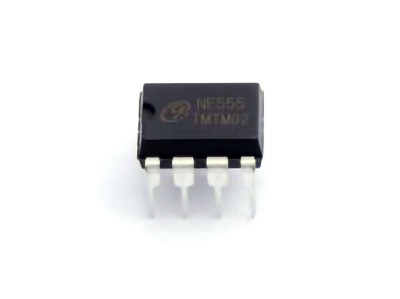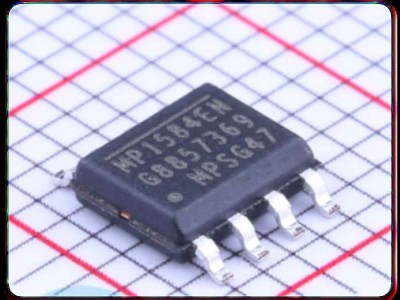
In modern electronics, precision voltage regulation is a crucial factor for ensuring stable system operation. The TL431 , an adjustable shunt Voltage Reference , plays a key role in voltage stabilization circuits. This article explores the application design of the TL431 adjustable reference voltage source, discussing its functionality, advantages, and key design considerations. It highlights how this versatile component is implemented in voltage stabilization applications across various sectors, offering efficient and reliable voltage regulation solutions.
TL431, adjustable reference voltage, voltage stabilization circuit, shunt regulator, precision voltage regulation, Power supply design, electronics, voltage reference IC, circuit design, stable voltage output.
Introduction to TL431 and Its Role in Voltage Stabilization
What is TL431?
The TL431 is a popular adjustable shunt regulator IC often used in voltage stabilization circuits. It is designed to provide a stable reference voltage with high accuracy and low temperature coefficient. The device works by regulating the voltage across its terminals, ensuring a constant reference voltage even in the presence of fluctuating input voltages. The TL431 is widely used due to its simplicity, reliability, and ease of integration into various electronic designs.
The TL431 features a built-in internal voltage reference of 2.495V (typically) and can be configured to provide output voltages ranging from around 2.5V to 36V, depending on the external components used. It operates as a shunt regulator, meaning that it maintains a constant voltage across its terminals, making it ideal for voltage stabilization applications where precision and reliability are essential.
TL431's Role in Voltage Stabilization
Voltage stabilization circuits are fundamental in electronics to ensure that other components, such as microcontrollers, sensors, or analog-to-digital converters (ADC), receive a stable voltage for their operation. Variations in supply voltage, temperature changes, or external disturbances can impact circuit performance, leading to errors or instability. This is where the TL431 comes in—it provides an efficient and cost-effective means to maintain a stable reference voltage, thereby ensuring the overall stability of the circuit.
In a typical voltage stabilization circuit, the TL431 is often used in conjunction with external resistors, capacitor s, and sometimes diodes to create a feedback loop that adjusts the output voltage in response to input voltage changes. The device’s adjustable reference voltage allows the designer to set the desired output voltage with high precision. Furthermore, the TL431 is often used in power supply circuits, Battery Chargers , and voltage regulators, playing a critical role in maintaining a reliable voltage source.
How the TL431 Works
The TL431 functions as a shunt regulator, which is quite different from a series voltage regulator. In a shunt regulator, the reference voltage is held constant by allowing current to flow through the device in parallel with the load. The feedback loop controls the amount of current that flows through the TL431, maintaining a steady output voltage. This contrasts with series regulators, which regulate voltage by adjusting the current supplied to the load.
In operation, the TL431 is connected in parallel with the load, with a feedback network used to set the voltage at the anode pin of the TL431. When the voltage at the anode exceeds the reference voltage, the internal control loop of the TL431 adjusts the current flowing through the device, thereby maintaining a constant voltage across the anode and cathode. The device can be fine-tuned using external resistors, which define the desired output voltage.
Key Features of TL431
Adjustable Output Voltage:
The primary advantage of the TL431 is its ability to provide a stable reference voltage that can be adjusted to suit different circuit requirements. By varying the resistors in the feedback network, the output voltage can be set with high precision.
Wide Voltage Range:
The TL431 is capable of regulating a wide range of voltages, from about 2.5V to 36V. This flexibility makes it suitable for a broad range of applications, including power supplies, battery chargers, and voltage regulators.
Low Temperature Coefficient:
The TL431 offers excellent temperature stability, which is crucial for maintaining precise voltage regulation over a wide temperature range. This ensures that the output voltage remains stable even under varying environmental conditions.
Low Power Consumption:
The device has low quiescent current, making it ideal for battery-operated systems and energy-efficient designs.
Precision:
The TL431 provides high accuracy in regulating the voltage, making it suitable for precision applications where a stable reference voltage is critical.
Ease of Use:
The TL431 is simple to integrate into circuit designs, requiring only a few external components, typically resistors and capacitors, to create a complete voltage stabilization circuit.
Practical Applications of TL431 in Voltage Stabilization Circuits
Designing Voltage Stabilization Circuits with TL431
The TL431 can be used in a variety of voltage stabilization applications, ranging from power supplies to signal conditioning circuits. Below are some common practical applications where TL431 plays a critical role.
1. Power Supply Regulation
In power supply circuits, the TL431 is often used as part of a feedback loop to regulate the output voltage. In this application, the TL431 helps maintain a constant output voltage despite fluctuations in the input voltage or load changes. By adjusting the resistors in the feedback network, the desired output voltage can be easily set, and the TL431 ensures that the output remains stable.
For example, in a flyback converter or a buck converter, the TL431 can be used to regulate the output voltage. When the output voltage deviates from the desired value, the TL431 detects the difference and adjusts the feedback signal, ultimately controlling the converter to bring the voltage back to the target level.
2. Battery Chargers
The TL431 is frequently used in battery charger circuits, where precise voltage regulation is essential to avoid overcharging or undercharging the battery. When designing a battery charger, it is crucial to maintain a stable charging voltage to prolong battery life and ensure safe operation. The TL431, with its adjustable reference voltage, is ideal for this task.
For instance, in a lithium-ion battery charger, the TL431 can be used to maintain the constant voltage required for charging. By selecting the right feedback resistors, the TL431 can be configured to regulate the voltage to match the battery’s nominal voltage, ensuring safe and efficient charging.
3. Voltage Reference for ADCs and DACs
Many modern systems use analog-to-digital converters (ADCs) and digital-to-analog converters (DACs) that require stable reference voltages to ensure accurate conversion. In these applications, any fluctuation in the reference voltage can result in errors and inaccuracies in the digital signal.
The TL431 can be used to generate a stable reference voltage for ADCs and DACs, ensuring that the conversion process is precise. By using external resistors and capacitors to filter noise, the TL431 provides a clean and accurate reference voltage for the ADC/DAC, improving the overall performance of the system.
4. Current Sensing Circuits
In current sensing applications, the TL431 is often used to create a stable reference voltage for the sensing circuitry. For example, in a current sensing amplifier, the TL431 can be used to provide a reference voltage that is used to set the threshold for detecting current flow. This ensures that the current sensing circuit responds accurately and reliably.
By configuring the TL431 in a feedback loop with the current sensing resistor, designers can create highly sensitive and accurate current sensing circuits, suitable for a wide range of applications, including power monitoring, battery management systems, and protection circuits.
5. Low Dropout Regulators (LDOs)
Another common application of the TL431 is in low dropout regulators (LDOs), which are widely used in portable devices where battery life is critical. LDOs provide stable output voltages even when the input voltage is only slightly higher than the desired output. The TL431 is ideal for use in LDO circuits because of its low dropout voltage, accuracy, and adjustable reference voltage.
By placing the TL431 in a feedback loop with a pass transistor (such as a MOSFET or BJT), designers can create a simple and efficient LDO regulator. This configuration allows for low dropout voltage and precise output regulation, making it ideal for battery-powered devices like smartphones, wearables, and IoT devices.
Benefits of TL431 in Voltage Stabilization
The TL431 offers several benefits in voltage stabilization applications:
Cost-Effective: The TL431 is inexpensive and readily available, making it a cost-effective solution for voltage regulation in consumer and industrial applications.
Versatility: The adjustable reference voltage makes it suitable for a wide range of applications, from power supplies to precision sensors.
Compact and Efficient: The TL431 has a small package size and requires minimal external components, making it ideal for space-constrained designs.
High Precision: The TL431 provides a stable reference voltage with excellent accuracy, ensuring reliable performance in sensitive applications.
Improved System Stability: By incorporating the TL431 into a voltage stabilization circuit, system designers can significantly improve the overall stability and reliability of their electronic systems.
Conclusion
The TL431 adjustable reference voltage source is an indispensable component in voltage stabilization circuits. Its ability to provide precise, stable voltage regulation with minimal external components makes it a valuable tool for engineers and designers. From power supplies and battery chargers to current sensing and LDO regulators, the TL431 is versatile enough to meet the demands of various applications.
By understanding the operation and applications of the TL431, designers can harness its potential to create efficient, reliable, and cost-effective voltage stabilization solutions. Whether in consumer electronics, industrial systems, or precision measurement instruments, the TL431 continues to play a key role in ensuring stable and accurate voltage regulation across a wide range of electronic devices.
If you are looking for more information on commonly used Electronic Components Models or about Electronic Components Product Catalog datasheets, compile all purchasing and CAD information into one place.


